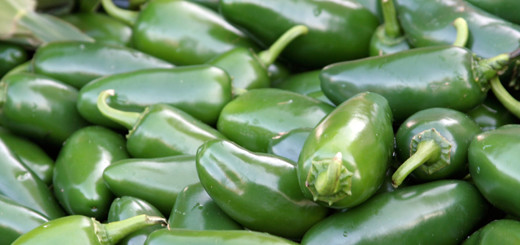Heirloom Treasures

Geri Wohl, Certified Nutrition Consultant www.bettereatingcoach.com
Written By: Geri Wohl, Certified Nutrition Consultant
Do you know what an heirloom variety is? How is it different? By outward appearance, an heirloom and a conventionally grown fruit or vegetable may look similar, to be classified as an heirloom, the variety must be open-pollinated– meaning that pollination is accomplished by natural mechanisms such as birds, insects and wind. Heirlooms by their very nature, are never genetically modified. Their seeds are sown for future plants. The plant and future seeds adapt to their environment, i.e. drought or soil conditions.
Heirloom apples come in a wealth of shapes, colors and flavors. They usually have unfamiliar names. Gizdich Ranch run by third generation farmer, Vince Gizdich, is located in Watsonville, CA. At Gizdich Ranch, besides growing boysenberries and olallieberries, they grow fourteen varieties of heirloom apples. Some of the ranch’s popular varieties are Newtown Pippin, Stayman Winesap, Black Twig and Prince Golden. Others such as Gala, MacIntosh and Pippin are more known varieties. Pippins, for example, were an heirloom variety that George Washington planted on his farm in Virginia.
You may find some apple varieties as both an heirloom and a conventional. The difference lies in the seeds, which give directions to the apple on how to grow.
Unlike conventionally grown varieties, the heirloom variety of apple is from seeds that have not been altered based on the needs and tastes of consumers. These apples can be purchased within hours of being picked. Heirlooms will have complex flavors that develop as they are eaten. Several varieties of heirloom apples are planted together to encourage pollination and enhanced crop yields. Heirloom apples may be smaller and have more scarring. They produce large amounts of protective compounds to thwart disease. These same compounds are what give us beneficial nutrients when we consume apples.
Conventionally grown apples are from seeds that have been altered to appeal to the broad consumer base. Characteristics range from sweetness to longer transit times. Most conventional apples are grown in a monoculture technique; where the land is used to grow only one type of apple. While monoculture farming increases yield, it is at the expense of quality. The soil becomes depleted of nutrients resulting in produce deficient in vitamins and minerals that it should normally have. Research from the Royal Pharmaceutical Society tested conventional apples and found that many beneficial nutrients are depleted resulting in lowered health benefits from apples. Also, monoculture farming makes the produce more susceptible to pests and infections requiring more pesticide use.
At Gizdich Ranch, Vince uses integrated pest management (IPM) to help control the pests and diseases that can affect his crops. As the pests are identified, the farm determines which environmental changes will prevent the pest being able to thrive. As this approach is increasing in use, hopefully fewer pesticides will be needed in the food we consume.
Apples are the second most popular fruit in the US. and autumn is prime apple season. A medium apple only has about 80 calories and is a fantastic source of pectin, a type of soluble fiber. In fact, a medium apple has about 5 grams of fiber. Make sure that you eat the skin, where approximately two-thirds of the fiber is located. This dietary fiber helps to remove the “bad” LDL cholesterol from your body. In addition, apples are rich in flavonoids and other antioxidants that help protect our bodies against disease-causing free radicals. Apples also contain good quantities of vitamin C and beta-carotene, both beneficial antioxidants. Click here for more about the beneficial nutrients in apples.
Apples have been ranked second in most commonly consumed fruits that are high in antioxidant levels. In fact, apples have an ORAC score of 5900 TE. Click here for more about ORAC scores.
In a number of studies, apple consumption may help reduce the risk of developing diseases such as cancer, cardiovascular disease and diabetes. Even though apples are high in natural sugars, apples were shown to reduce the risk of getting type II diabetes by 7% possibly due to its fiber and other compounds contributing to improved blood sugar regulation. In addition, eating a whole apple before a meal may increase satiety resulting in consuming about 15% fewer calories during your meal. What a great, delicious weight loss tool!
Most apples are heavily sprayed with pesticides. Try eating organic or heirloom apples. Wash your apples thoroughly so that you can eat the skin and reap the powerful benefits.
For a delicious apple treat, try my no-bake apple tart at recipe and remember, if you’re munching on an heirloom, you may be enjoying the same flavor of an apple that your great-great-great grandfather enjoyed in his youth!
© Geri Wohl, CNC











